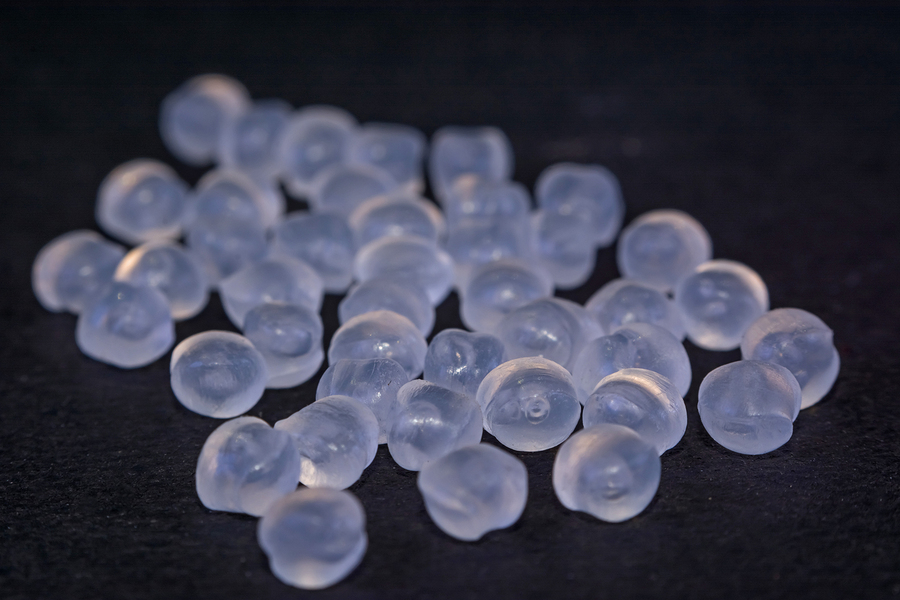Thermoplastic materials are one of the many types of plastics known for their recyclability and application versatility. They are formed when repeating units called monomers link into branches or chains.
Thermoplastic resin softens when heated, and the more the heat is administered, the less viscous they become. The process of curing is completely reversible, making it possible to remold and recycle the material without its physical properties being negatively affected. A majority of the materials used to provide high strength, flexibility, and shrink-resistance and can serve in both low and high-stress applications.
Types of Thermoplastic Materials
Thermoplastics often used for manufacturing include polyvinyl chloride (PVC), polyethylene (PE), and polystyrene (PS), often used in packaging. Some common thermoplastic materials used include;
- Acrylic
- Nylon
- Polypropylene
- Teflon
- Polycarbonate
- Acetal Homopolymer Polyoxymethylene
- Acetal Copolymer Polyoxymethylene
Advantages and Disadvantages of Thermoplastic Materials
Advantages;
1. Thermoplastic waste is reusable — Instead of discarding the waste that occurs during the injection molding process, thermoplastic materials can be recovered and re-melted for future use.
2. They are a higher-yield choice of material — Due to their recoverability, you will see a high piece yield from your overall stock of material.
3. The material recycles well — Thermoplastic materials are suitable for recycling since they are easily melted.
4. They are great for prototyping — Because the main purpose of prototypes is to test the function of products, making use of a material that is reusable is ideal. After the prototype has been tested, the plastic can be melted and re-molded for another prototype or for production.
5. Thermoplastics are suitable for high-impact applications — Their molecular qualities make them ideal for application areas that require high-stress resistance and strength.
6. Suitable for thin-wall uses — Their strength and flexibility make thermoplastics one of the best choices for applications that need high-tensile strength as well as thin wall thicknesses. Thermoplastic materials have found their niche in application areas such as plastic bags which can be broken with a small amount of force but at the same time, hold up to day-to-day use and impact.
7. Receptive to surface finishing — For products where decorations or logos are applied, thermoplastics are preferred since they lend themselves to a wide range of methods and materials used for surface finishing, making them suited for consumer products.
8. Thermoplastics are chemical-resistant — The material offers high levels of chemical resistance, making it a good choice for medical materials and devices and also other areas where chemical exposure can occur, and protection is needed.
Disadvantages
1. They are not the best for high-temperature applications — When subjected to adequate heat, the material will re-liquefy, making them less suitable for uses where the subjection of sustained heat is expected. Thermoplastic materials also have poor resistance to highly polar solvents, organic solvents, and hydrocarbons.
2. Thermoplastics are susceptible to creep — Creep occurs when the material stretches and eventually weakens after prolonged exposure to long-term loads of stress. Composites, a type of thermoplastic material, tend to fracture under high-stress conditions.
Applications of Thermoplastic Materials
One of the main application areas thermoplastics are used in are the piping systems found in modern cities. The cost incurred when protecting steel pipes against harsh environments can sometimes be high. Thermoplastic materials are suitable because they can withstand corrosive environments. They can also hold materials of both hot and cold temperatures and can handle any type of fluid.
Other applications include;
- Sports equipment
- Toys
- Drinking bottles
- Food storage containers
- Bullet-proof vests
- Plastic grocery bags
- Shampoo bottles
No one material is superior to the other; the key is picking the best material for your product needs, your budget, and supply chain. Looking to source plastic parts from a manufacturer? Get in touch with Proto Plastics today.
